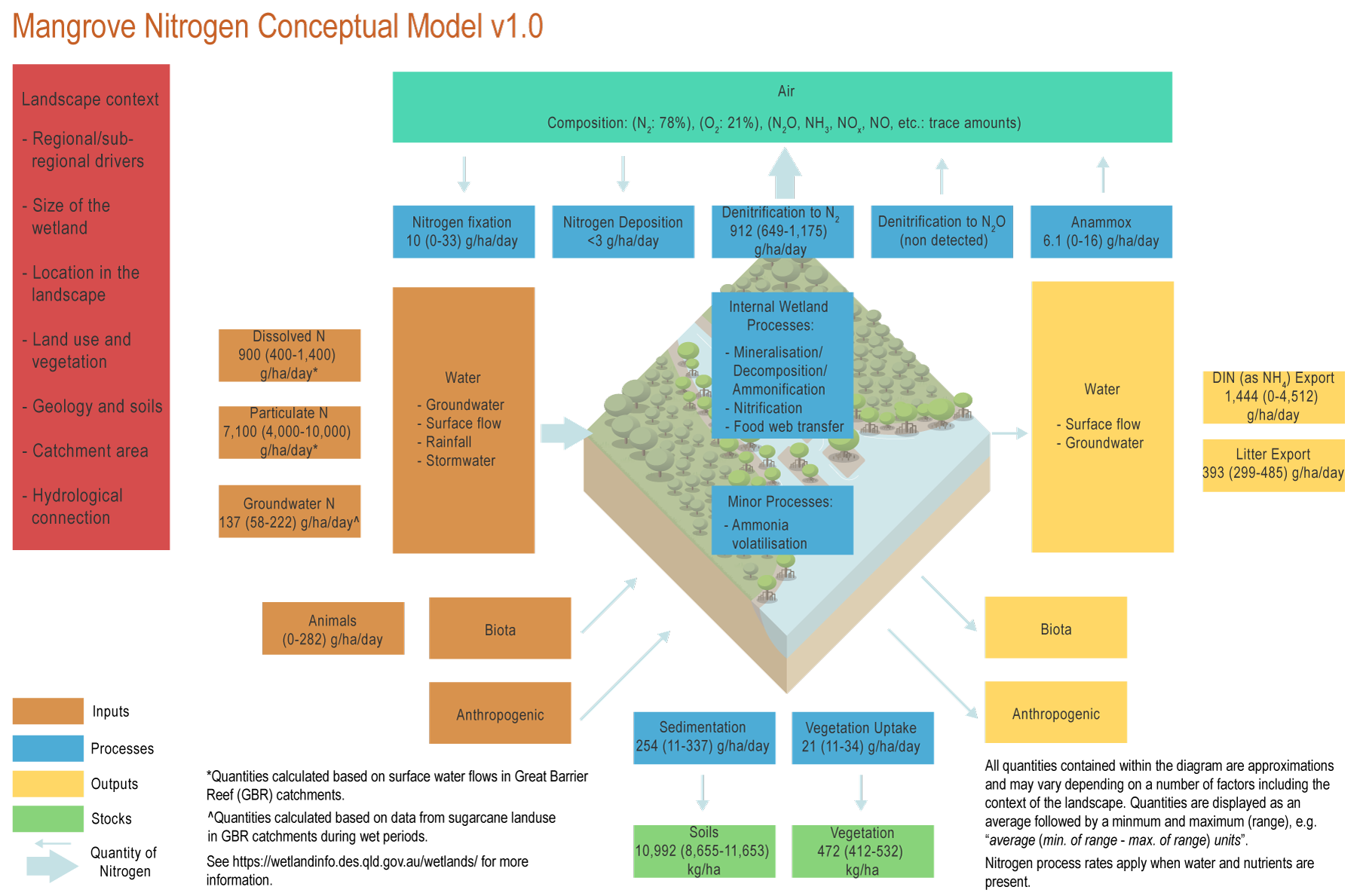|
|
MangroveMangrove – Effects
The conceptual models were compiled by researchers in collaboration with a wide range of stakeholders from Natural Resource Management groups, universities and government agencies and based on available scientific information[5]. Click on elements of the model or select from the tabs below The effects of nitrogen (N) on a wetland mangrove forest can vary depending on the inputs, processes, stocks and outputs of the wetland. GeneralNitrogen effects content can be found on Pressures page. Mangrove specificIncreases of N in mangroves will cause increases in N processing, with higher denitrification rates[6][1]. Increase of N loads does not necessarily increase decomposition in mangrove soils[4][2]. However, tipping points of N enrichment in mangroves may result in changes in microbial communities and the reduction of the forest function in mitigating N pollution[6]. Estuarine wetlands have a relatively high capacity for nutrient retention in low and medium flood events and can play a role in protecting the marine environment from land-derived nutrient pollution. However, in the long term, nutrient enrichment may have negative consequences affecting vegetation structure and composition and reducing their capacity for nutrient retention. Estuarine wetlands are usually limited by nitrogen and/or phosphorus, and nutrient enrichment can enhance plant growth. However, in mangroves, the benefits of increased growth in response to increased nutrient levels can be offset by high mortality rates and slow recovery rates during periods of drought and after tropical storms. This is because nutrients, especially nitrogen, stimulate the growth of shoots at a faster rate than the roots, which causes physical instability of the mangrove trees. The decrease in root biomass can also enhance subsidence of soils, decreasing the capacity of the forest to keep pace with sea level rise[5]. Given the response of mangroves to nitrogen, high nutrient loads delivered in floodwaters to the Great Barrier Reef could be a contributor to the localised dieback of mangrove forests when followed by periods of low rainfall and high salinity or after tropical storms. Nutrient enrichment also has the potential to favour algal blooms in estuarine wetlands, which can smother pneumatophores and seedlings and result in the shift of primary production from a macrophyte to an algae-dominated system. Nutrient enrichment can also change the microbial community in estuarine sediments[3][5]. References
Last updated: 31 July 2021 This page should be cited as: Department of Environment, Science and Innovation, Queensland (2021) Mangrove – Effects, WetlandInfo website, accessed 8 May 2025. Available at: https://wetlandinfo.des.qld.gov.au/wetlands/ecology/processes-systems/nitrogen-concept-model/mangrove/effects.html |

 — Department of the Environment, Tourism, Science and Innovation
— Department of the Environment, Tourism, Science and Innovation

